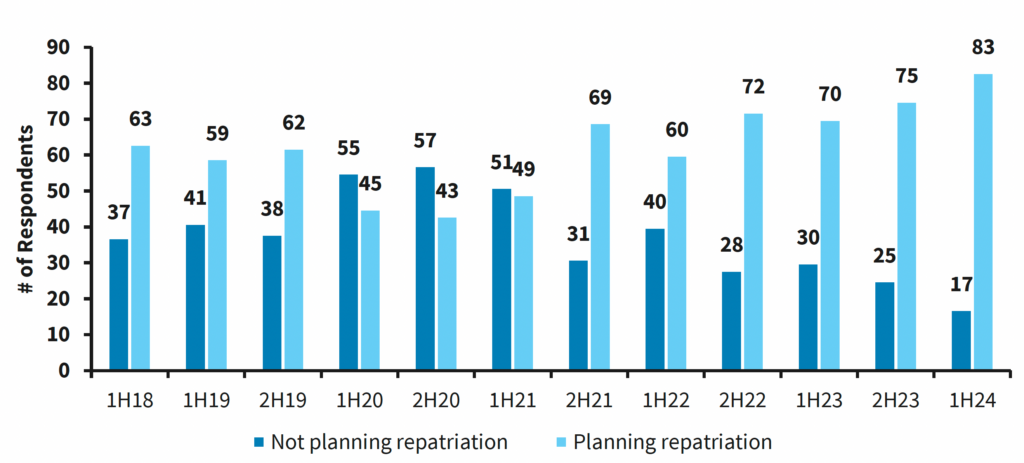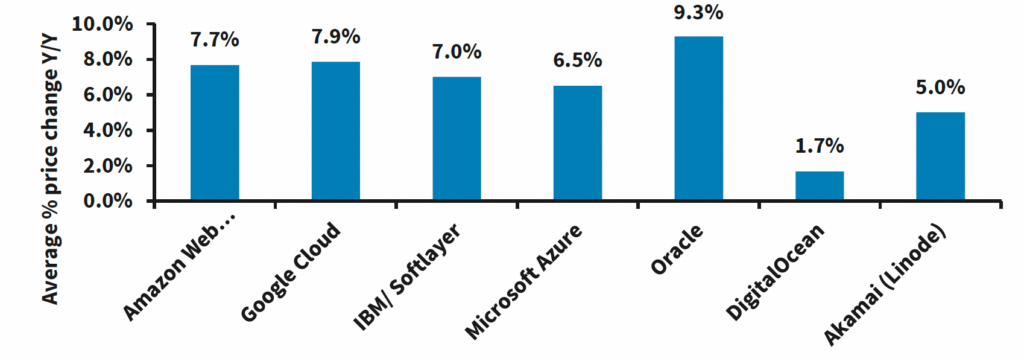- The Great Cloud Debate: Public Cloud vs. Private Cloud
- The Rise of Cloud Repatriation: What It Is and Why It Matters
- Why Cloud Repatriation Is Important
- The Growing Cost of Public Cloud – Why Companies Are Moving Back
- The Intend to Move Back to Private Cloud / On-Premise from Public Cloud
- Storage and Compute – Leading the Charge in Cloud Repatriation
- Public Cloud Isn’t Going Away – Why a Hybrid Model Could Be the Future
- The Hybrid Model
- The Future of IT Infrastructure Is in Control
The Great Cloud Debate: Public Cloud vs. Private Cloud
The debate between public cloud and private cloud solutions has intensified recently. While the public cloud has gained traction for its scalability and ease of use, a growing number of businesses are rethinking their strategies. The rise of cloud repatriation—moving workloads from public cloud back to private cloud or on-premise systems—signals a significant shift in how organizations approach their IT infrastructure.
In this article, we’ll explore what cloud repatriation means, why it’s happening, and how businesses like yours can benefit from this trend.
The Rise of Cloud Repatriation: What It Is and Why It Matters
Cloud repatriation refers to the process of moving workloads from the public cloud back to private infrastructure. Recent surveys show that this trend is rapidly growing, with 83% of CIOs planning to repatriate workloads in 2024, a significant jump from 70% in 2023:
Open image-20240911-125207.png

Organizations are realizing that while the public cloud offers scalability, it’s not always the most cost-effective or secure option for every workload. Storage, computing, and databases are leading the charge in this shift.
Why Cloud Repatriation Is Important
1. Cost Efficiency
While public cloud solutions initially seem cheaper, many businesses are discovering that costs can spiral as workloads grow. The pay-as-you-go model of the public cloud may be great for small workloads, but for businesses with constant, high-demand operations, the costs can balloon.
2. Security and Compliance
Security is a growing concern in the public cloud. Organizations in industries like healthcare, finance, and government often handle sensitive data and need stringent security protocols. Private cloud and on-premise solutions give companies better control over their data, which is crucial for ensuring compliance with industry regulations.
Analogy: Securing your data in the public cloud can feel like living in a gated community—you trust the system, but you’re still dependent on someone else for security. A private cloud is like owning your own land, where you control the security systems and decide who enters and leaves.
For more on the importance of data control, check out Why Data Sovereignty Should Matter to Us All.
The Growing Cost of Public Cloud – Why Companies Are Moving Back
According to the Barclays CIO Survey 2024, while public cloud spending is still strong, its growth is slowing. In fact, many companies are re-evaluating their cloud strategies and moving critical workloads back to private clouds due to rising costs and concerns over vendor lock-in.
Public Cloud Spending vs. Private Cloud Spending Over Time shows that while public cloud spending grew rapidly over the past few years, a plateau is forming as more businesses consider cost-effective alternatives:
Open image-20240911-131214.png

For insights on how businesses can scale efficiently while controlling costs, explore How Zextras Carbonio Helps Organizations to Expand Their Business Efficiently: Carbonio and Scalability.
The Intend to Move Back to Private Cloud / On-Premise from Public Cloud
Here you can find the driving force behind cloud repatriation according to the Barclays CIO Survey:
- Security
- Cost
- Flexibility
- Lock-in risk
- Subscription-based model
- Uncertain roadmap
- Reliability
Barclays CIO Survey highlights how security, cost, and flexibility concerns have driven enterprises to bring databases and firewall appliances back in-house:
Open image-20240911-131856.png

Security Concerns
For many companies, security is the number one reason for repatriating workloads. When dealing with sensitive information such as customer data, financial transactions, or intellectual property, controlling who has access is paramount.
Analogy: Imagine your sensitive company data is like a treasure. With the public cloud, it’s stored in a vault owned by someone else. In a private cloud, you hold the key to your own vault. You decide who can access it, and you’re less reliant on outside providers for security.
If you want to understand how Zextras solutions ensure data control, see Zextras Carbonio – An Ideal Digital Workplace for Those Who Need Absolute Control over Their Data.
Vendor Lock-In: Avoiding the Public Cloud Trap
Another major reason businesses are opting for private clouds is to avoid vendor lock-in. Once you build your infrastructure around a particular public cloud provider’s tools, migrating away can become a complex, expensive process.
Flexibility of Private Cloud
Private cloud infrastructure offers the flexibility to switch software, manage upgrades, and adjust configurations without being tied to a single vendor’s ecosystem.
Your company might find itself locked into a cloud provider’s ecosystem. Every time they wanted to add a new tool or feature, you had to rely on that provider’s pricing and capabilities. By moving back to a private cloud, they regained control over their infrastructure and could choose the best tools at the best price.
Storage and Compute – Leading the Charge in Cloud Repatriation
Storage and Compute Workloads Repatriation shows that storage and compute workloads are two of the most common types of data being moved from the public cloud back to private solutions. Why? These workloads are often the most costly to maintain in the public cloud and are vital for business operations.
The latest survey indicates a growing trend among companies to use public cloud services not only for lower-priority storage and computing tasks but also for high-value databases, software services, and increasingly, Generative AI. As companies become more comfortable running diverse workloads on the cloud, the rising demand for premium AI services is contributing significantly to cost increases. This is because AI workloads require substantial computing resources, leading to higher expenses. Additionally, the growing volume of data and applications further impacts overall costs.

Organizations that rely heavily on computing power or store vast amounts of data find that on-premise solutions offer better long-term value, especially when scaling.
Public Cloud Isn’t Going Away – Why a Hybrid Model Could Be the Future
While many companies are repatriating workloads, it’s important to note that the public cloud isn’t disappearing. It still plays a crucial role, particularly for tasks that benefit from its flexibility and scalability, such as short-term projects, testing environments, or less sensitive workloads.
The Hybrid Model
The future for many organizations is likely a hybrid approach, combining the best of both public and private cloud solutions. By using the public cloud for non-critical workloads and private cloud or on-premise systems for sensitive or high-cost operations, businesses can optimize for both cost and security.
Example: Think of the hybrid model as owning your own house (private cloud) but occasionally renting a vacation home (public cloud) for temporary needs. You get the stability and control of your primary residence while enjoying the flexibility of a rental when it’s needed.
Many companies are embracing this dual strategy to keep costs under control while maintaining the flexibility to scale certain operations in the cloud when necessary.
The Future of IT Infrastructure Is in Control
Businesses are realizing that control over their infrastructure—whether through on-premise solutions, private clouds, or a hybrid approach—is key to optimizing both cost and security. The public cloud still has its place, but for many organizations, repatriating workloads to private infrastructure offers a better long-term solution.
